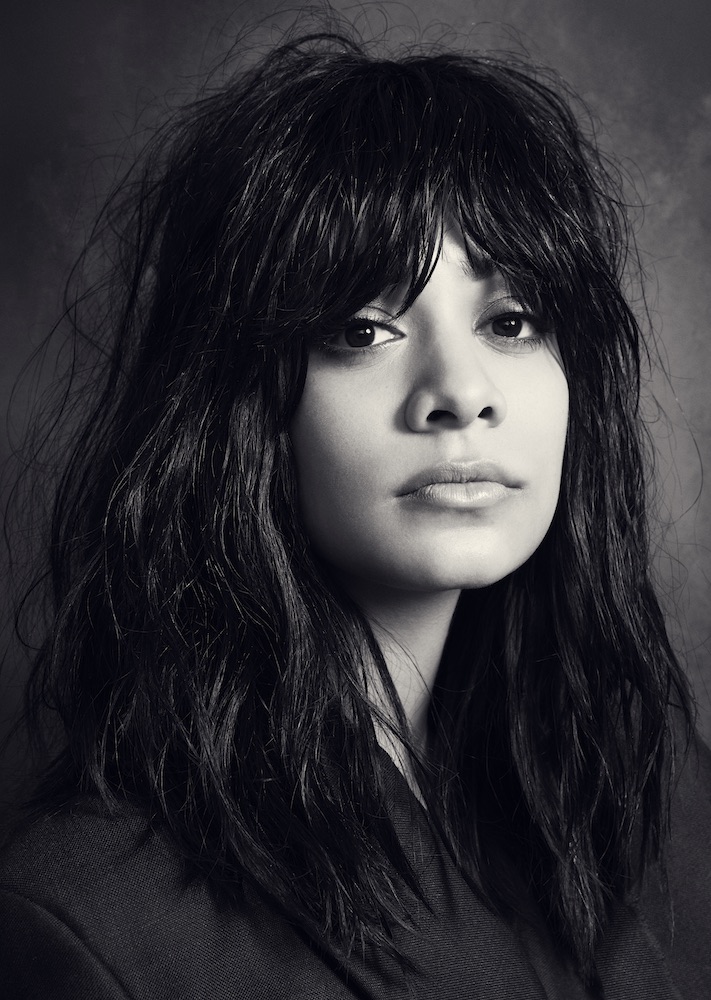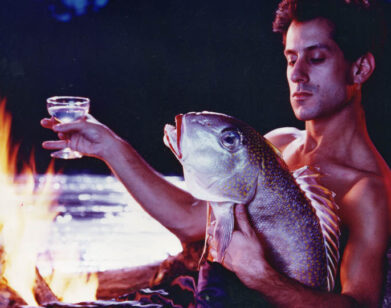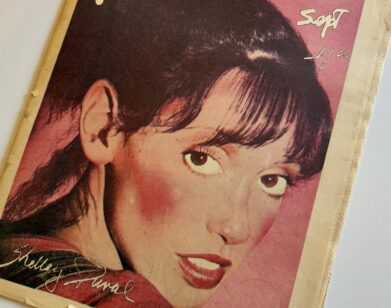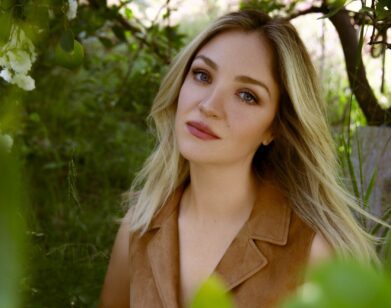Discovery: Devika Bhise
DEVIKA BHISE IN NEW YORK, APRIL 2016. PHOTOS: DAVID NEEDLEMAN. STYLING: SAVANNAH WHITE. HAIR: CHARLIE TAYLOR/HONEY ARTISTS USING HAIRSTORY. MAKEUP: SUZY GERSTEIN/HONEY ARTISTS USING MILK MAKEUP.
When Devika Bhise was cast in her first major film, the 25-year-old New York-native didn’t even have an agent. She found herself in remarkably good company, though; directed by Matt Brown, The Man Who Knew Infinity also features Jeremy Irons, Dev Patel, Stephen Fry, Toby Jones, and Jeremy Northam. After screening at film festivals like Toronto, Tribeca, and Zurich, it is due out in select cinemas this week. “I came back from India after I shot the movie and was like, ‘I just shot a big movie with big stars, hello?'” Bhise explains over the phone. “You expect your phone to ring or something, but that’s never how it works,” she continues. “Being an actor is about being proactive 100 percent of the time.”
Based on the life 20th-century Indian mathematician Srinivasa Ramanujan, The Man Who Knew Infinity is not a particularly happy story. A prodigious autodidact from a small town in Southeast India, Ramanujan (played by Patel) left his wife Janaki (Bhise) and mother behind to study mathematics at Cambridge University with famous English intellectuals such as G.H. Hardy (Irons). Not everyone at Cambridge was as welcoming as Hardy, and Ramanujan soon found himself isolated from his family, friends, and culture, in a country embroiled in World War One.
NAME: Devika Bhise
AGE: 25
HOMETOWN: New York, NY
CHILDHOOD GOALS: When I was growing up, I watched a lot of Audrey Hepburn, Katherine Hepburn, and Cary Grant movies— all of those older movies. I wanted to be Audrey when I was young. I wanted to be an actress, but in the same way little girls want to be princesses. I don’t think I looked at the actualities of what that would mean, I just wanted to be a star! I used to perform for my parents all the time with my cousins and I always did school plays, but it never really occurred to anyone for me to go into professional acting. [My school] Brearley is a tough place as well, so it’s not conducive to leaving and acting on your own while you’re in school.
FIRST FILM: When I was in 10th grade at Brearley, I was in my first movie, which I got so randomly. It was called The Accidental Husband. I was contacted by the director Griffin Dunne—he actually saw me dancing at Lincoln Center. I’ve been doing Indian classical dance since I was three and my mom is an Indian classical dancer as well, so I was often on her stage when she had performances. He saw me perform and I was called in for an audition. I had never auditioned for any real thing ever, so I went in and they were like, “Headshot and résumé.” I was like, “What?” I got my mom to email them a picture of me, which was not a headshot. I got that role and it was just an incredible experience. Griffin was such a giving, caring director, who spends time with his actors, which is really important. He really made me feel at home and comfortable with the role. It was a very small part, which got cut down to an even smaller part, but just being in that movie was a great experience and I got into SAG, which I thought was very, very cool.
COLLEGE DAYS: When I graduated from high school, I didn’t want to go to college. In my head I was like, “I’m 18. I’m so old. I have to start acting now otherwise it won’t ever happen.” And my parents were like, “Let’s slow down for a second. You have to go to college.” I was choosing between NYU and Middlebury and Vassar—schools with known acting programs. I got into Hopkins with a Hodson Trust scholarship, which is a $100,000 scholarship for people who they think have done something creative. At the time, I’d made this half an hour documentary about hijras, which are transgender prostitutes in India. I wrote about it in my application and they thought it was cool. Then John Astin, who was the head of the program at Hopkins, called me. He was Gomez Adams in the original Addams Family. He’s a big actor of other calibers, but that’s how everybody knows him. He took me out to lunch and we talked about the program and he was like, “I’ll mentor you, you can pick your curriculum”—he kind of sold the school for me. My parents were like, “If you go to college, afterwards we’ll support you if you still want to act, but you need to have an education—a BA in something—so if you change your mind, you’re not screwed.” At the time I didn’t really understand, but I am happy that I went to college in hindsight.
RESEARCHING THE RED LIGHT DISTRICT: It started as this senior project in high school; instead of your classes you spend all your time on one thing and present whatever you’ve done. I was going to write a paper originally about this community [in India] hijras. They live on the outskirts of society. People think they have mystical powers, that they can curse you. They don’t interact with anyone except their own communities. When they’re younger, they work as prostitutes, because they can’t get any other job. It’s quite tragic. It’s how society has shaped them. There are a lot of apartment complexes with just hijras and nobody else, because in India it’s such a stigma that they don’t live amongst other people. Even my mother, who’s an educated person, had a little bit of this fear and stigma towards them. It was interesting to me; I just didn’t understand it, coming from [New York]. There’s no equivalent community here.
So I was going to write this paper, and then I was in India the August before my senior year and just took a camera and started recording everything when I was doing research. My parents were so unhappy with this whole thing because I was going to the red light district of Bombay, and all these sketchy, shady areas to meet hijras and talk to them. The hjiras [I met] actually gave me a lot of information. They were as interested in me as I was in them. I didn’t have any stigma against them. I hugged one of them and she started crying and she was like, “No one’s ever hugged or touched me non-sexually in my life,” and it was just such a heartbreaking thing. All of them are young—the ones I talked to were 18. They basically leave home and join this community and they don’t have any other options. So they ended up telling me a lot of things that they wouldn’t share. The thing about the hijdra community is that they’re very secretive. They have traditions and things that they do that they just do not share with the outside world, including how they undergo castration. It’s very gory stuff. But they told me all of it, because I think they just didn’t know what to make of me. I was this American, I was speaking Hindi in this strange accent. Then I ended up putting it all together and it became this movie. My mom was like, “You should email it in to some festival.” I was like, “No, no, no.” But then it got into the New York Independent Film Festival and it won the award for Best Social Documentary, which was very cool and unexpected. It’s not something I ever really planned to do it just ended up happening because I had all this footage.
GETTING AN AGENT: I didn’t have an agent for a very long time. When I graduated, I did this thing where you meet casting directors and take classes with them and just hope they call you in on your own. Then I got cast in this Off-Broadway play through that means called And Miles to Go, which was a beautiful, beautiful play and new as well. It was an interesting experience to be working with the playwright. Every rehearsal and preview, he would change entire chunks of dialogue because he would see how it was working. The play actually did really well, and my manager went to watch it, and after the play I signed with her. I was with just her for a while, and then I only got an agent to come on board, like, a year ago. She acted like an agent for a while—she sent me out for a lot of big projects. It’s so hard to get an agent in New York. It’s nuts. Every time something happens, you can’t expect the world to come knocking on your door.
STAGE TO SCREEN: While I was in college, I was in a play non-affiliated with Hopkins. It was a professional play in Baltimore called The Partition. It’s the same story about Ramanujan, but the play adds a little bit of this mystical element to it—it deals with the ghosts of past mathematicians and my character was actually the goddess who they talk about a little bit in the movie, who Ramanujan believed wrote mathematical equations on his tongue. It was that kind of a story; it wasn’t much of a biopic. It was about having fun and taking creative license. I was the only woman in the play; Ramanujan’s wife and mother didn’t have a role in the play. It started with him in England, actually, so they didn’t have the preamble of him being in India.
When the producers were researching all the stories and plays that had been about this topic, I guess they heard about me through a couple of reviews that they had read about the play. They got in touch with me and then I met Matt [Brown], who’s the director, and I did a screen test and talked to him about my experience with Indian classical dance, which from the part of India that Ramanujan is from as well. They actually wanted to cast a lot of Indians to make sure it was authentic, and I was this New York girl strolling in being like, “No, I can do it better.” After a few screen tests—they were casting out of India as well so I had to get through that hurdle—I got the role.
THE MAN WHO KNEW INFINITY: They basically shot the Cambridge stuff for a month and then Dev and I were in India with Arundathi Nag, who plays my mother-in-law, and a few other of the Indian actors. They only brought a really small crew to India, I think because they couldn’t pay for everyone to come. So Jeremy [Irons] was not in India, but I’ve interacted with him a lot because of film Toronto and Zurich and all those festivals we did last year, and he’s just lovely, lovely, lovely. But Dev and I were really the ones in India doing the main scenes. Stephen Fry was in India for two days. When I met him I was so in awe.
THE MAN WHO KNEW INFINITY COMES OUT TOMORROW, APRIL 29, IN SELECT THEATERS.







